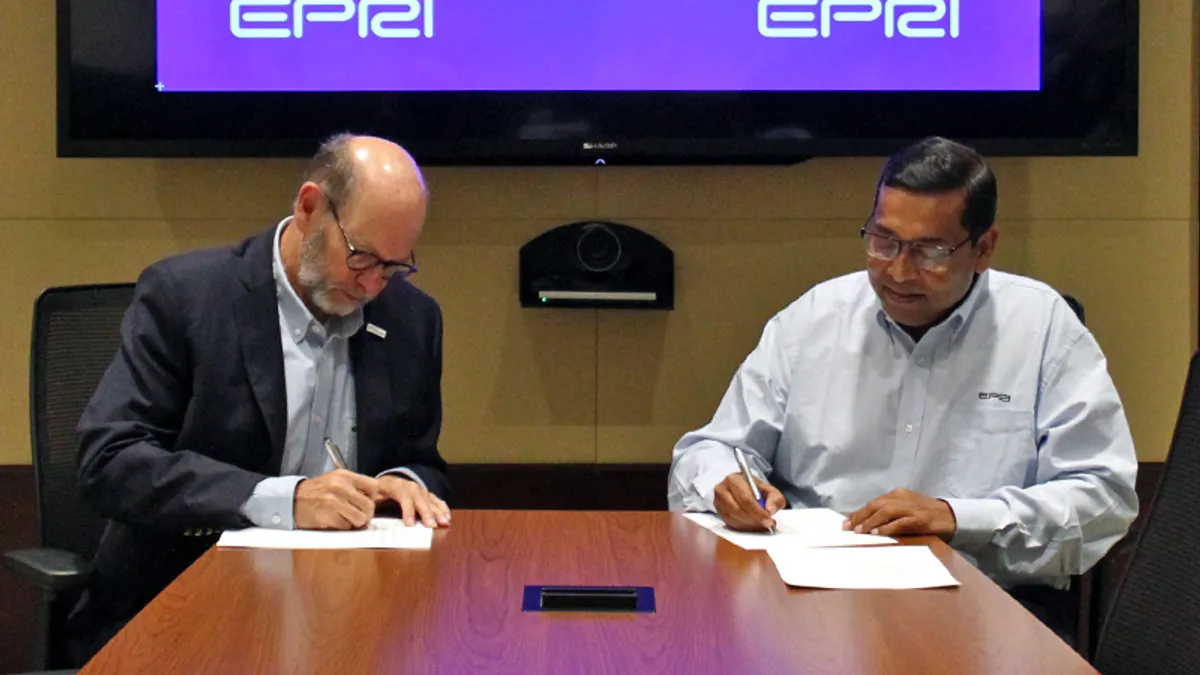Dive Brief:
- The Electric Power Research Institute (EPRI) and the North American Electric Reliability Corp. (NERC) on Thursday announced they have renewed and expanded an existing memorandum of understanding (MOU) to address resilience and reliability issues across the electric grid with a goal of "supporting effective deployment of industry resources."
- EPRI is also working with NERC on a resource adequacy initiative, announced in June, to address risks similar to grid disruptions seen in Texas and California. The groups plan to identify "adequacy assessment metrics and criteria for low-carbon systems" and develop models for future extreme weather scenarios.
- The strengthened agreement between NERC and EPRI "calls for regular communication and collaboration on key issues like the resiliency of and climate impact to the power grid," said Andrew Phillips, vice president of transmission and distribution infrastructure for EPRI and the group's MOU contact.
Dive Insight:
EPRI's collaborations with NERC will help utilities to address rapid changes in the nature of electricity supply and demand, as well as prepare for future climate scenarios, the group said.
"This collaboration will allow for the EPRI research portfolio to be informed by key issues being addressed by NERC, and for NERC [to] have access to the most recent R&D, to meet the goals of both organizations," Phillips said. The MOU renewal builds on a previous commitment for more regular communications between the two organizations, he added.
In a statement, EPRI said the agreement means the groups will work on "effective deployment of industry resources to address emerging issues, jointly sponsoring workshops or meetings, and identifying and collaborating on key projects and activities."
The MOU is a refresh of a 10-year-old agreement between NERC and EPRI, accordng to a NERC spokesperson, and now has a 5-year term and an automatic renewal each subsequent year. Specific projects are not named in the MOU.
The separate resource adequacy initiative is focused on several goals, including: developing better metrics to assess risk and guide utility investment decisions; modeling how system resources perform under all operating conditions; and speeding the creation of new resource adequacy assessment tools.
The groups are trying to avoid a repeat of grid failures in Texas and California this year and last.
The Electric Reliability Council of Texas lost almost half of its generation during a February cold snap that left millions without power. Last year in California, a heat wave forced the grid operator to utilize blackouts to avoid a grid collapse.
"As recent supply deficiency events have shown," EPRI said in a brief on the initiative, "existing resource adequacy processes, metrics and tools may be insufficient and need to evolve to address the rising trend in disruptive events, while also considering the changing resource mix. Existing tools may also understate the probability and depth of many" grid failure events.
The project will continue through the first quarter of 2023, and EPRI said it will share key findings and recommendations as they emerge. A final public report will be published when the project concludes.
Ultimately, EPRI wants to identify a resource adequacy "minimum criteria" for low-carbon systems and develop an adequacy framework that "integrates future climate, technology, policy, and societal trends," according to the project brief.
"Through our collaboration with EPRI and other industry leaders, we are preparing for the transformation of the grid to ensure that resilience is sustained and improved," Mark Lauby, NERC senior vice president and chief engineer, said in a statement.















